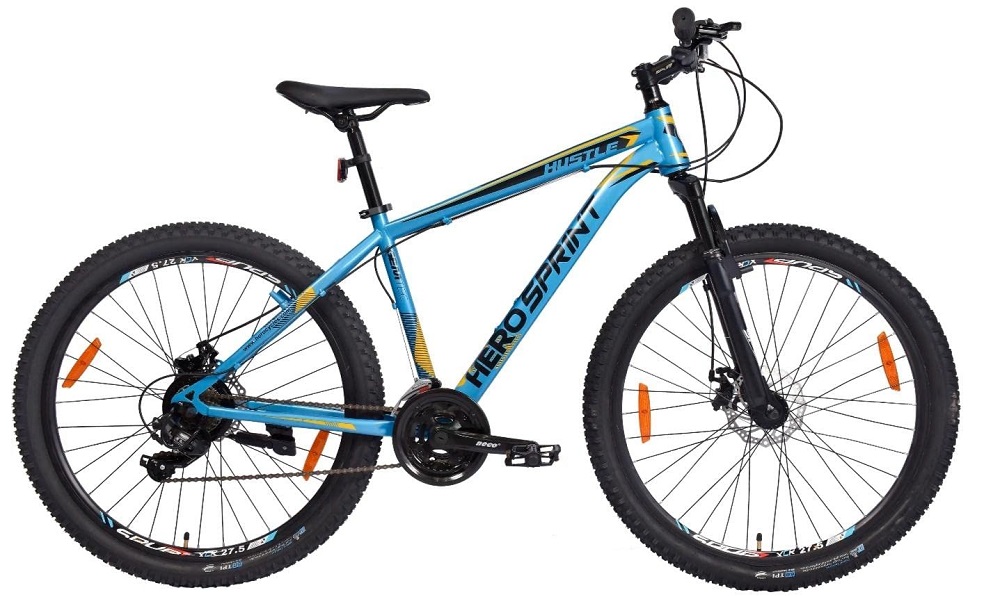Cycling has evolved far beyond being just a simple mode of transportation. What was once a basic pedal-powered vehicle has now transformed into a sophisticated machine designed for comfort, efficiency, and performance. Among the most fascinating innovations in modern cycling is the gear system, an intricate mechanism that allows riders to adapt to different terrains, speeds, and riding conditions effortlessly. Whether you’re climbing steep hills, cruising down slopes, or gliding through flat city roads, understanding how gears work can completely change your riding experience.
For many beginners, though, terms like derailleurs, shifters, and ratios can sound intimidating. But once you decode the logic behind them, they become your greatest allies on the road. In this comprehensive guide, we’ll break down everything you need to know about the gear system, from how it functions to how you can use it effectively for smoother, more enjoyable rides.
What Is a Gear System and Why It Matters
A bicycle’s gear system is what allows you to adjust the resistance while pedaling. Simply put, gears make it easier or harder to pedal depending on the terrain. Lower gears help you climb steep hills with less effort, while higher gears let you ride faster on flat roads.
The system works by changing the ratio between the number of teeth on the front chainrings and the rear sprockets. This ratio determines how far the rear wheel moves with each pedal stroke. A lower ratio means more torque (great for climbing), while a higher ratio means more speed (ideal for flat roads).
Every gear cycle operates on this simple yet powerful mechanical principle. It’s what separates entry-level bikes from performance models, allowing riders to take control of their cadence and energy output. Understanding this foundation is essential for getting the most out of your ride.
The Core Components: Chainrings, Cogs, and Cranks
Before we get into how the gear system functions, it’s important to understand the components that make it work.
1. Chainrings (Front Gears)
Located at the front near the pedals, chainrings are attached to the crankset. Most bikes have one to three chainrings, depending on their design. More chainrings mean a wider range of gear combinations. The larger the chainring, the harder it is to pedal but the faster you’ll go per stroke.
2. Cogs or Sprockets (Rear Gears)
At the rear wheel sits a cluster of cogs known as the cassette. These determine how much resistance you’ll feel while pedaling. A smaller cog offers higher speed with less torque, while a larger one gives more power for climbing but at a slower speed.
3. Crankset and Pedals
The crankset connects the pedals to the chainrings. Every time you pedal, power is transferred through the crankset to the chain, which drives the rear wheel. Together, these components create the seamless motion that powers all modern cycles.
Meet the Derailleurs: The Unsung Heroes
Derailleurs are the mechanical arms that move the chain between gears. There are two types, front and rear, each serving a distinct purpose.
- Front Derailleur: Moves the chain across the front chainrings. It’s responsible for large shifts in gear ratios.
- Rear Derailleur: Moves the chain across the rear cassette. It fine-tunes your gearing, helping you adapt to subtle changes in terrain.
These derailleurs are operated through cables connected to your handlebar shifters. When you press a shifter, tension is applied or released in the cable, causing the derailleur to move the chain precisely where it needs to go.
Derailleurs require regular maintenance and tuning to work efficiently. Proper alignment ensures that the chain transitions smoothly, reducing wear and preventing dropped chains. Once you master their function, your gear cycle becomes not just a ride, but a perfectly tuned machine responding intuitively to every motion.
Shifters: Your Control Center
If derailleurs are the muscles, shifters are the brain. Mounted on the handlebars, shifters are the control mechanism that allows you to change gears effortlessly.
There are several types of shifters:
- Trigger Shifters – Found on many mountain bikes, these use levers that you push with your thumb or finger.
- Grip Shifters – Common on commuter bikes, these rotate around the handlebar grip for a smooth, twist-based gear change.
- Integrated Brake-Shifters – Found on performance road bikes, these combine braking and shifting into one streamlined system.
Knowing how and when to use shifters is key. The general rule is to shift before you need to. If you’re about to climb a hill, downshift early to a lower gear. If you’re descending, shift up to maintain speed without excessive pedaling.
When and How to Shift Gears
Knowing when to shift is just as important as knowing how. Smooth shifting ensures longevity of your drivetrain and keeps your ride enjoyable.
- Before a Hill: Shift to a lower gear before the climb. Doing this mid-climb can cause the chain to skip.
- During a Descent: Shift to a higher gear to maintain resistance and control.
- At Traffic Stops: Shift to a medium gear before stopping so you can start again smoothly.
- Avoid Cross-Chaining: Don’t use extreme gear combinations (like the largest chainring and largest cog simultaneously). It strains the chain and reduces efficiency.
Smooth, predictive shifting is an art that separates experienced riders from beginners. With time and practice, it becomes second nature.
Maintenance Tips for Long-Lasting Performance
Like any mechanical system, gears need regular care to stay in top shape. Here’s how to keep your bike performing at its best:
- Clean and Lubricate Regularly – Dirt buildup can wear out your drivetrain. Clean the chain and gears weekly if you ride frequently.
- Inspect Derailleurs and Cables – Over time, cables stretch and derailleurs may lose alignment. A quick tune-up ensures precise shifting.
- Check Chain Wear – Chains elongate with use, which can damage cogs. Replace them when they show signs of wear.
- Adjust Gear Indexing – If your gears don’t shift cleanly or make noise, minor indexing adjustments can restore perfect alignment.
Maintaining your gear system not only enhances performance but also prevents costly repairs down the line.
How to Choose the Right Gear Cycle
With so many options available, choosing the right model can seem daunting. Here’s a quick checklist:
- Purpose: Are you commuting, mountain biking, or road racing? Choose a design built for your activity.
- Terrain: City riders need fewer gears, while off-road enthusiasts should go for wide-range gearing systems.
- Budget: More gears and high-end components cost more, but offer superior performance.
- Comfort and Fit: Always ensure the frame size suits your height. An ill-fitting bike can lead to strain and inefficiency.
- Maintenance Commitment: More complex systems need more frequent tuning.
Whether you’re investing in your first gear cycle or upgrading your current one, understanding these basics ensures you get a model that complements your lifestyle and fitness goals.
Understanding gears isn’t just for professional riders, it’s for anyone who wants to make the most of their cycling experience. Once you learn the basics of how chainrings, cogs, derailleurs, and shifters work together, you’ll discover a newfound appreciation for the engineering precision behind every turn of the pedal.
A gear cycle gives you control over every ride, whether you’re climbing steep hills, gliding down open roads, or cruising through busy city lanes. By learning how to shift smoothly, maintain your components, and select the right gear for each moment, you elevate your rides from ordinary to exceptional.


